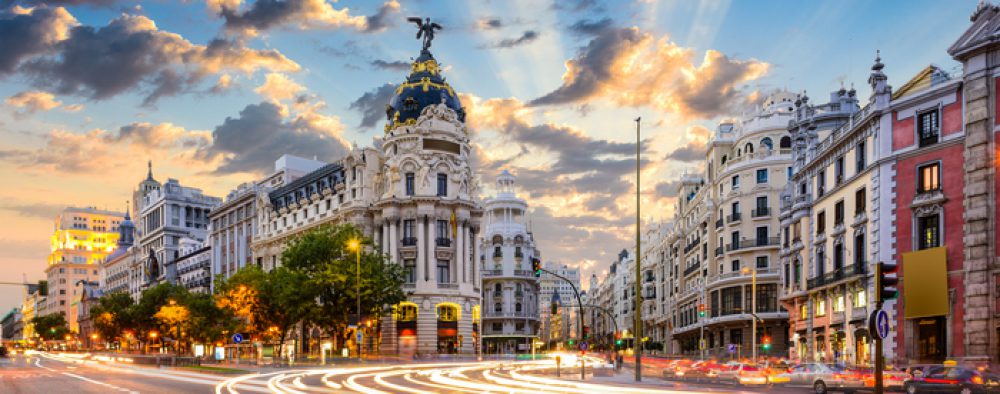Gathering in the lobby once again
Today was another late start and as our weary group once again congregated in the narrow hotel lobby you could definitely see why. Many tired, but excited, faces from having seen and experienced so much over the past few jam-packed days huddled in the lobby trying to keep out of the way of other guests. After collecting everyone we made our way down Gran Vía and met our fantastic tour guide, Ana, in Plaza de España. Immediately she could see how much of a toll our grand adventures had taken on us and promised us plenty of shady spots along our walking tour route.
Starting at the Plaza de España
Our Civil War tour began in the beautiful Plaza de España, flanked by the impressive Torre de Madrid (Tower of Madrid) and Edificio España (Spain Building). Standing in the metaphorical shadows of these notable buildings, metaphorically since we were trapped under the intense Spanish sun, the food, drinks, and fun faded as Ana’s overview of the Spanish Civil War made us reflect that we were truly here to learn how a dark past shaped the Madrid we had experienced so far. Ana explained to us briefly that the conflict officially began in 1936 when the Nationalists launched a coup against the Republican government, igniting the Spanish Civil War. After three years of intense fighting, the war ended in 1939 with a Nationalist victory and General Francisco Franco became the dictator of Spain for the next thirty-six years. During his reign, both the Torre de Madrid and Edificio España were built under his orders. These impressive buildings that we were all gazing up at were here as part of Franco’s efforts to rebuild Spain after the war and when constructed were the tallest structures in Spain. The brutalist style Torre de Madrid was at one point the tallest concrete building in the world and the neo-Baroque Edificio España introduced the concept of the mall with many different shops located under its rooftop terrace.

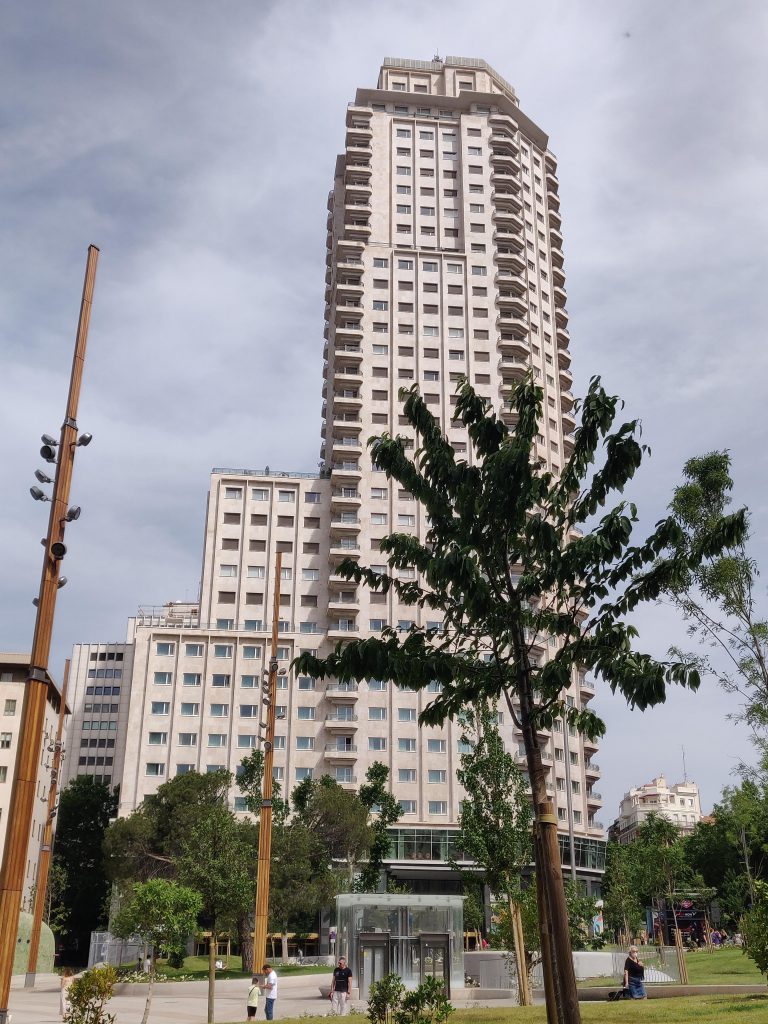
A piece of ancient Egypt in Spain
We continued our tour by walking to Parque de la Montaña (La Montaña Park) stopping in front of what appeared to be a series of stone structures. We stared curiously at them while also taking in the sights, sounds, and even smells of the park, as Ana pointed out that the tree behind us was the one that smelled so amazing. Underneath this fragrant tree, Ana explained that we were looking at the Temple of Debod, an ancient Egyptian temple that was moved to Spain for preservation in the 1960s. Relevant to our tour, this wonder was sitting on the former site of the city’s military barracks. Those barracks were the place where the Nationalists launched their coup d’etat and attempted to take Madrid in 1936 at the start of the Civil War. The failure of their coup is what caused the war to continue on and Madrid would not fall until the end of the conflict in 1939. The site also has a beautiful view of the massive park Casa de Campo.

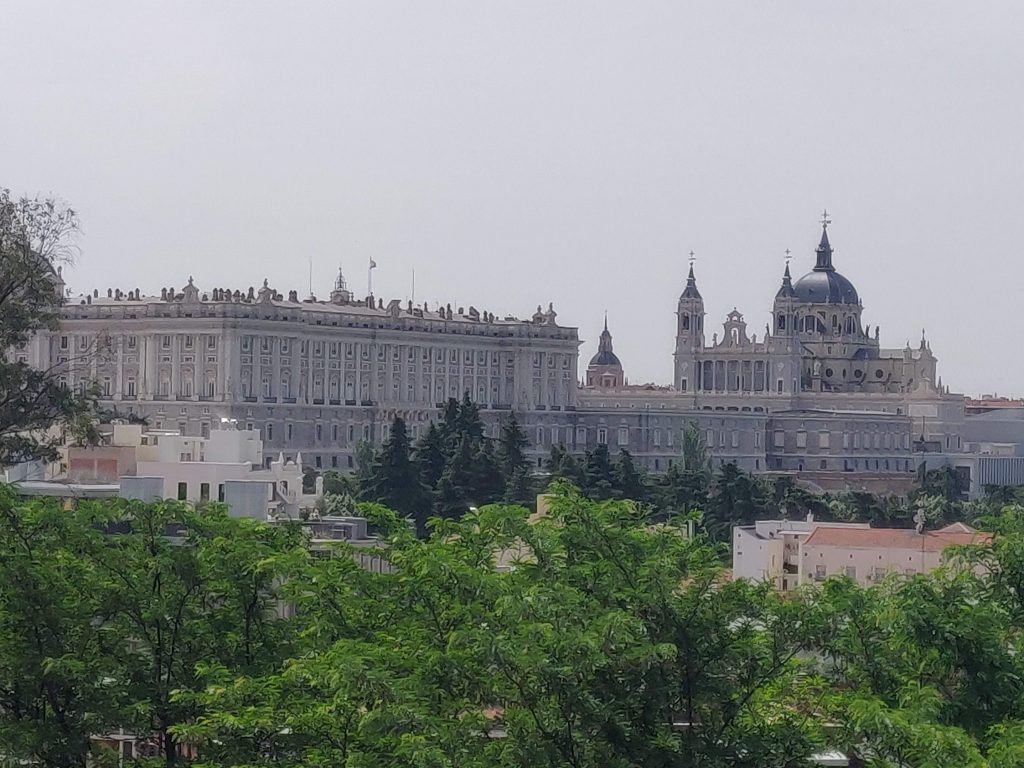
Flying planes and a heart
Journeying on to Parque de Atenas we stood beneath the grand Royal Palace of Madrid and the Teatro Real (Royal Theatre). We gathered around Ana next to the statue of the famous fictional character of Spanish literature Don Quixote, staring up at the Teatro Real, discussing how the Spanish Civil War was the first conflict in which planes dropped bombs rather than grenades. In fact, during the war, the Teatro Real was used as storage for bombs and an explosion sent a real human heart flying into the air. I was beyond curious about this and Ana explained that an Italian opera singer loved performing in Madrid and had donated his heart to the theater. Thankfully we learned that the singer’s heart was recovered and returned to the theatre hopefully safe and sound! These types of stories are what I personally love about history, as they help us connect with the people of the past more than just a list of dates and places ever could.
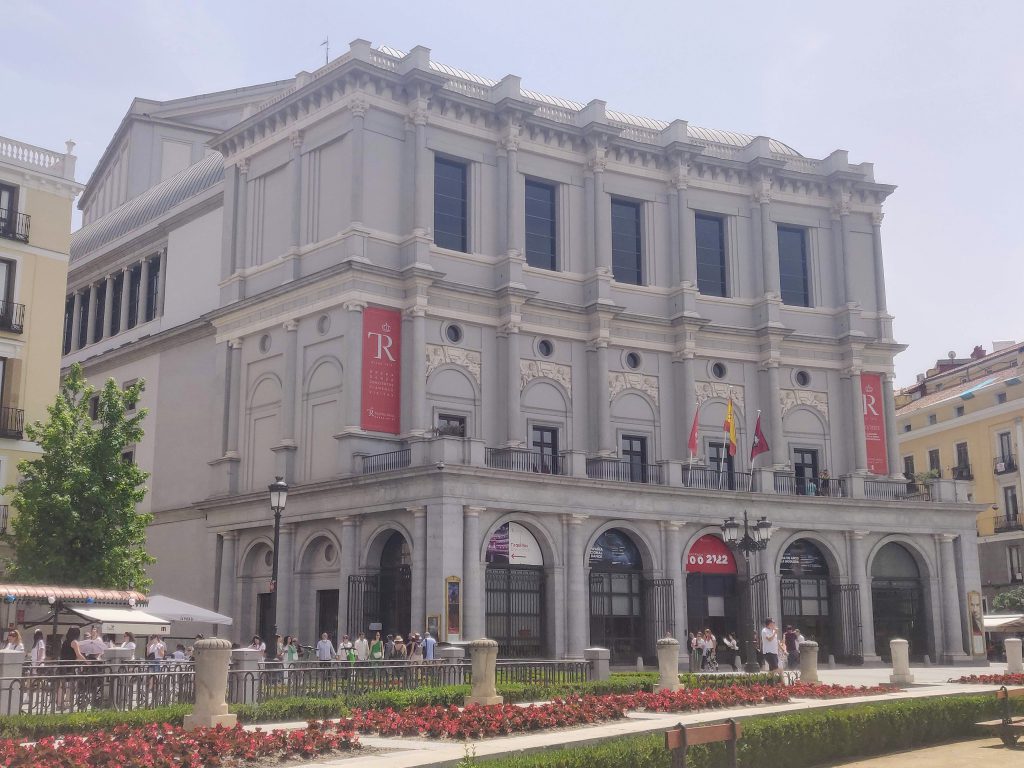
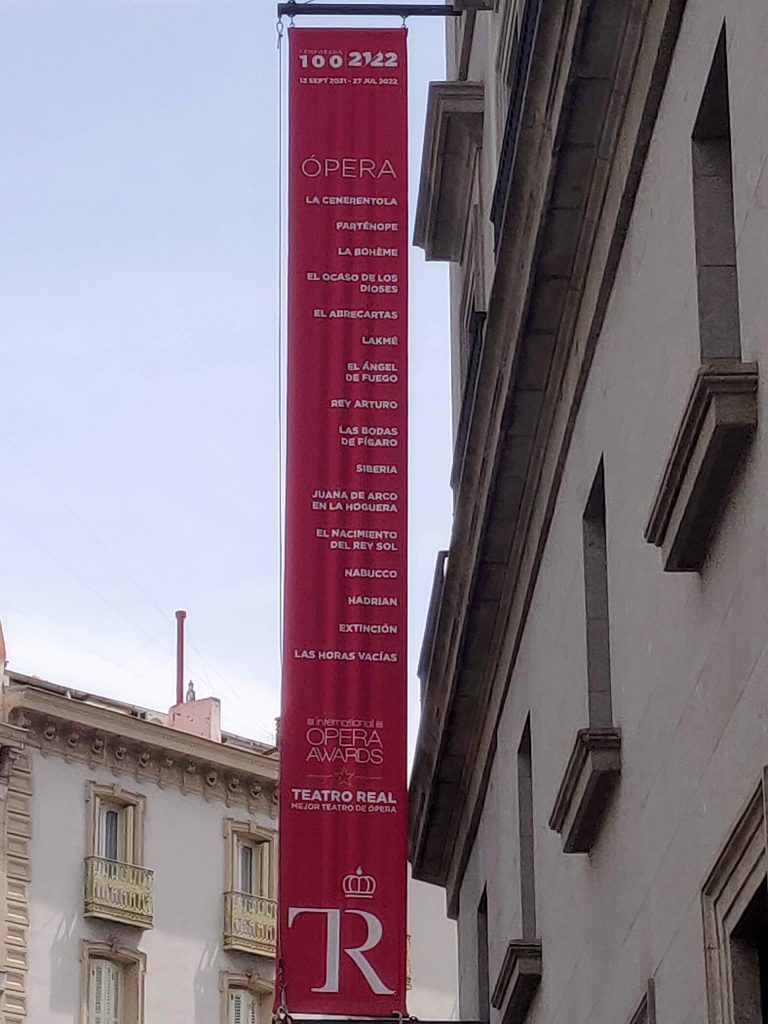
Following the amazingly informative tour, a group of us split off to explore the park and the many restaurants that lined its edges. We stopped for a quick lunch of tostas and refreshing helado at Taberna Real Restaurante. Reinvigorated by our meal and refreshed by our ice cream we took Madrid’s wonderful metro to the Thyssen-Bornemisza museum to escape the heat and see some great works. It was impressive to see that the museum had a large collection of paintings by American artists, as the Prado and Reina Sofia museums we had visited earlier often did not feature them.
An evening of great food and jazz
After some brief but much-needed rest back at the hotel, we set off to a tapas restaurant called La Casa del Abuelo. On Professor Zabalbeascoa’s recommendation, we tried the garlic shrimp and it was indeed very good. Other excellent dishes we had were huevos rotos (broken eggs) and my personal favorite patatas bravas (spicy potatoes) with both bravas sauce and garlic mayonnaise. Following yet another great meal of the day, we headed for Cafe Central, a jazz cafe with live shows every evening. At the Cafe, we were treated to the rock and jazz stylings of a group called Red House Revival. As a saxophone player, this cafe was the personal highlight of my day, even as someone who loves history and greatly enjoyed the morning walking tour. The band was lively and had the entire crowd clapping along and begging for an encore by the end.
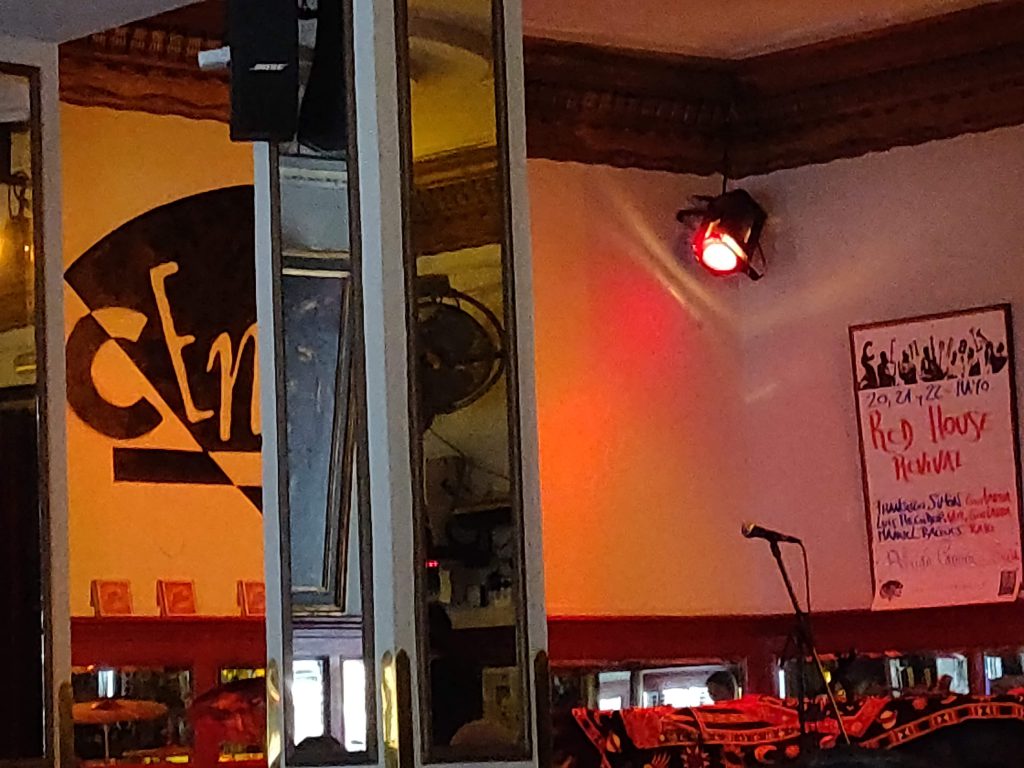

Connecting jazz and the Civil War
To cap off a lengthy day, we made our way back to the hotel, and still wired from that thrilling performance we decided to unwind on the hotel terrace. Curious to learn more about the Cafe, a quick google search lead me down the internet rabbit hole of the history of jazz in Spain. Cafe Central opened in 1982 in the explosion of music and art that followed the end of Franco’s dictatorship, which had suppressed Western-style music in favor of traditional Spanish folk music. For anyone planning to visit Madrid I’d highly recommend a visit to Cafe Central and to not forget while listening to the excellent performances that even a simple jazz cafe’s existence was influenced by the Spanish Civil War just as much as the rest of this beautiful city has been.
